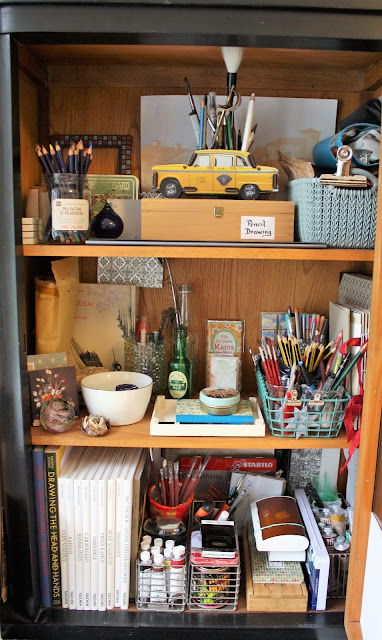Developement of framing techniques
A half piece of wooden 'stuck' hangs 'suspended' above the main scene of the painting, leading as it splinters off to a bare track of raw wood with paint piled up on either side. A gash where the paint was pulled off with the decoration, leaving a relief of the pattern it once represented. Looking closely I think I see evidence that the wood was added after the painting was complete and that the paint was actually pulled off when it was lost, but I may be wrong.
To frame or not to frame. Some pieces of art work clearly need a frame, watercolour on paper for example, the glass protecting the delicate surfaces from moisture and dirt. But for work done in other mediums such as acrylic paint the answer isn't as obvious. Does a frame enhance what is already there? Does it make the painting look better or is it too much? Does it push the overall image over the top, making it almost farcical? Also, other than painting on paper of canvas, what type of other combinations would I like to create. These questions swirled in the back of my mind as I stepped off of the worn stones and onto the luxurious flooring on the other side of the silent, sliding, tinted door of the old gallery at Schloss Eggenberg. This gallery, dubbed unimaginatively, 'the old gallery', houses the medieval collections of the Joanneum as well as Flemish and even slightly later works. And with these paintings come a nicely chronological line of frames and framing techniques.
Walking from room to room examining the corners of the pictures, evaluating place were art meets frame, and photographing interesting points of contact such as nails, it suddenly occurs to me that if any of these paintings is ever stolen I will probably be the primary suspect. Maybe that is why the museum guard has been following me from room to room...
As time has progressed toward the contemporary, the painting of subjects has evolved from heavily two dimensional to fully three dimensional. This drawing out of the volume of things seems to have applied to framed as well. The first batch of paintings I viewed were medieval iconographic works of tempera on wood. Some of these were done on a panel fitted into a wooden frame while others were painted on a wooden board the center of which had been carved out and carefully flattened, leaving a raised edge. These 'frames', whether attached or not were painted to compliment the overall work and it is not until later that the frames take on a separate aesthetic. This genre sees frames as in integral part of the piece.
As I move forward in time, ever closer to the present, solid wood frames begin to develop. These are clearly separate from the paintings themselves but are also individually made for them.
A further development seems to be the adding of a thin strip of metal or gilded wood between the wood of the frame and the painting.
I saw a lot of metal pieces nailed on at this point. Not only on the frames but onto the art as well.

At this point frames are being developed as unique pieces and begin being heavily carved. It was interesting to see them becoming more and more ornate until in an explosion of splendor and excess they begin being gilded once again.

Since this is the 'old gallery' the more minimal, modern frames are not as present, but the trend does return to the simpler aesthetic in which the painting becomes once again the primary focus of the viewers perception, leaving the frame to act as a boundary and emphasizing streak of color or wood.
I gained a lot of visual knowledge and also style options from this closer evaluation of the framing techniques and developments visible in the museum. It has certainly sparked my imagination in terms of what I could do in my studio as well as what I prefer in a frame.
So now my question to you- have you observed this trend? What type of frames do you prefer when displaying artwork? Do you let the art do the talking or is an ornate frame essential to the perfect presentation? I would love to hear in the comments.
To get
posts as soon as they are published click on the subscribe button at the
top of the page or Follow by clicking on the follow button.






























Comments
Post a Comment